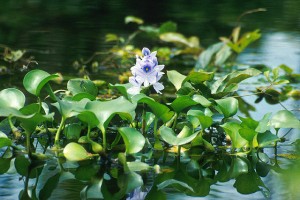
Water hyacinth is considered to be one of the primary invasive weed problems in Delta waterways: its prolific floating biomass interferes with pumping equipment for agricultural water supply and recreational activities such as boating and fishing. Excessive water hyacinth biomass may alter water quality and provide habitat for undesirable disease-carrying insects.
Using Landsat imagery as of mid-July 2015 the total estimated acreage of water hyacinth coverage has increased on Delta waterways by about 92 acres (12%) since mid-June 2015. This is mainly on the Old River, San Joaquin River, and the False River.
These Landsat image products are shared widely and used by partners at the USDA, U.S. Bureau of Reclamation, California Department of Parks—Boating and Waterways, and many other state and local agencies to help plan controls on weed biomass growth in all Delta waterways. This remote sensing applied science that spans the western U.S. and Hawaii is funded entirely by the USDA and represents NASA Ames’ most important and recognized collaboration with USDA.
Further Reading:
+ Another bad year for water hyacinth, The Stockton Record

Be Part of What’s Next: Emerging Applications of Landsat at AGU24
Anyone making innovative use of Landsat data to meet societal needs today and during coming decades is encouraged to submit and abstract for the upcoming “Emerging Science Applications of Landsat” session at AGU24.





